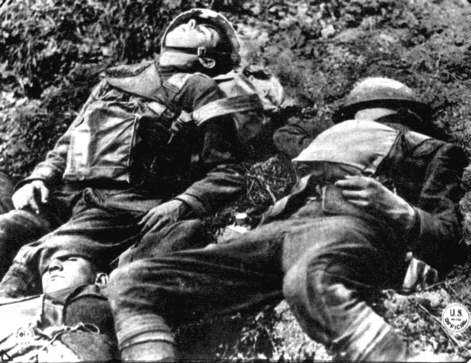Meuse-Argonne Offensive

The Meuse-Argonne Offensive was the final Allied offensive in World War I that pushed the Germans to surrender on November 11, 1918. The Germans had gained some land and success in France during its spring and summer campaigns. However, the Allies, with numerous fresh American divisions coming in, decided to make a decisive push against Germany in the fall of 1918.
Strategic Importance
While the goal of the offensive was to “consume” the Germans, as described by General Pershing, the strategy to do this was to cut off their main supply route. The Germans controlled the land between the Argonne Forest and the River Meuse in France, just inside its border with Belgium. The Sedan-Mezières railroad, Germany’s main supply link, was in this area. Taking control of this railroad was the Allied Force’s main objective.
Both the Allied Forces and the Germans understood how critical this area was to Germany’s ability to continue its offensive into France. For this reason, both sides invested all available troops to the Meuse-Argonne Offensive and surrounding battles.
Challenges of the Offensive
The Meuse-Argonne presented a number of challenges to the U.S. forces, which made up the largest part of the Allied Forces fighting. First, the overgrown, bushy, terrain of the area was difficult. The forest had no roads over which tanks and troops could easily move. Furthermore, the Germans had been in control of the area for the past four years and had well-fortified it.
The other key challenge was logistical. Most of the Americans were some miles away where they had just fought a battle at St. Mihiel Salient. Moving that many troops and their armory in such a short time period was an unprecedented logistical operation. Without the successful troop movement, the Germans would have likely held their supply lines.
Early Stages of the Campaign
The ground campaign began in the early morning fog on September 26, 1918. The previous night, Allied Forces had bombarded German positions. The fog gave good cover to the more than 700 Allied tanks that were advancing, with numerous infantry troops following behind. The Germans were taken by surprise and the Allied forces were gaining ground. They’d captured 23,000 German prisoners and moved almost 6 miles forward.
However, one American division had difficulty capturing its assigned land and the entire Allied advance was slowed down. During this day-long stoppage, the Germans were able to retreat and regroup. As a result of the Germans getting time to prepare, the battle started to turn against the Allies. On September 30, Pershing called an end to the offensive.
Fighting began again on October 4. The entire month of October was a fierce war of attrition between both sides. French troops were also heavily involved during this period. Pershing handed over command of the American Expeditionary Forces to Lt. General Hunter Liggett.
End Phase of the Offensive
Additional U.S. troops arrived and the divisions were reorganized. They made a new push against the Germans, moving to the north and east. The goal was to reach the Meuse River and break the German lines entirely. The Americans crossed the river on November 4 and the Germans surrendered on November 11, 1918.
Cost and Consequences
Casualties for both sides were high. The Americans had 26,277 killed, with another 95,786 wounded. The Germans, who had far fewer troops in the campaign, had 28,000 killed and 92,250 wounded.
The Meuse-Argonne Offensive was the largest American military campaign to that date and one of the world’s greatest battles. In addition to its logistical size, this campaign also the critical push that ultimately ended the First World War.
